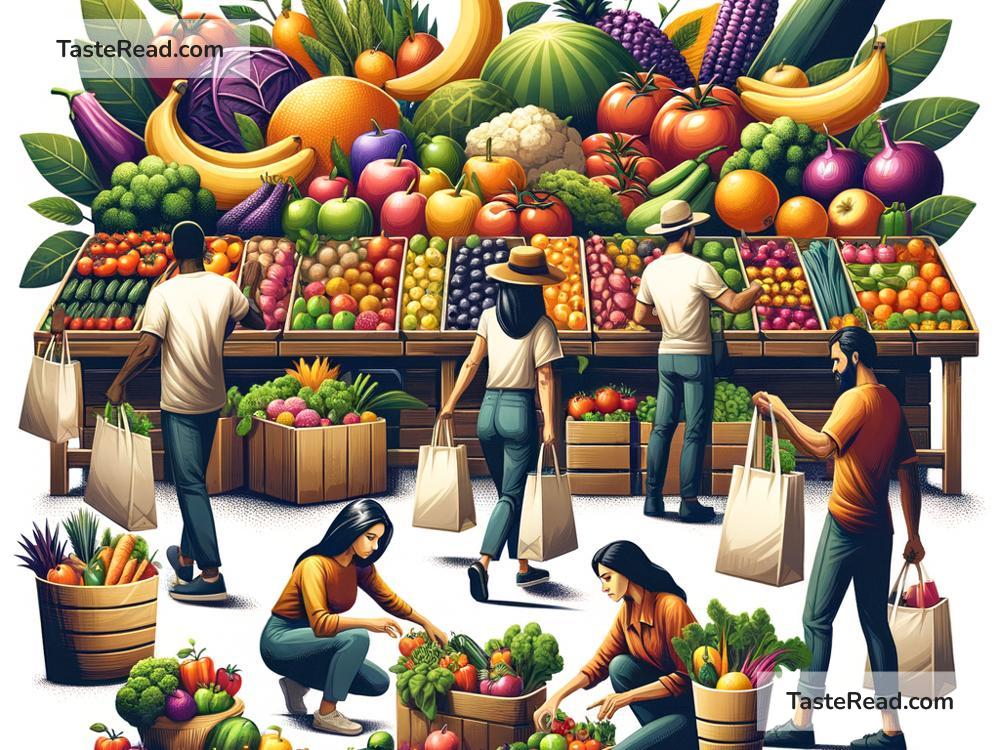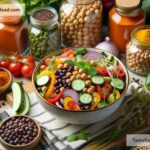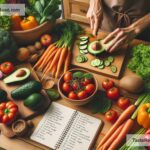How to Incorporate More Local Foods into Your Diet
In recent years, eating locally-produced food has become more popular. Many people now care about where their food comes from and want to support local farmers and producers. Eating local food is great for the environment, your health, and your community. But how do you actually incorporate more local foods into your diet? It can seem challenging at first, but with a few simple steps, you can enjoy fresher, tastier meals while helping your local economy.
Here’s a guide to get started:
Why Eat Local?
Before diving into the steps, let’s talk about why eating local food matters. Locally-grown food travels shorter distances to reach your plate, which means it’s fresher and often tastes better. Because local farmers don’t have to worry as much about transporting food long distances, they can let fruits and vegetables ripen naturally, giving them richer flavors and better nutritional value.
When you buy local, you’re also helping small farmers and producers in your community. Plus, local food systems are better for the environment. Less transportation means fewer carbon emissions, and smaller farms tend to use more sustainable practices. Eating locally isn’t just about food—it’s about building a stronger, healthier community.
Step 1: Visit Farmers’ Markets
Farmers’ markets are one of the best ways to find local food. Many towns and cities have them, and they are often open on weekends. At farmers’ markets, local farmers sell fresh fruits, vegetables, eggs, dairy products, meats, and even baked goods.
The next time you visit a farmers’ market, plan a few meals based on what you buy. For example, if you find fresh tomatoes, cucumbers, and peppers, make a salad as part of dinner. If you pick up farm-fresh eggs, try making a frittata for breakfast. Supporting farmers’ markets is fun because you can meet the people who grow your food and learn about their farming practices.
Step 2: Join a CSA
CSA stands for Community Supported Agriculture. This is a program where people sign up to receive a box of fresh, local produce and other farm products, usually once a week. CSAs give farmers a steady income, and in return, you get a rotating selection of seasonal foods.
Joining a CSA is a great way to incorporate local foods into your diet because the produce is delivered to you or picked up at a nearby location. You don’t have to think about what’s in season—your CSA box will include whatever’s fresh and ready to harvest. This can encourage you to try new fruits, vegetables, and recipes you might not have considered before.
Step 3: Shop Local Grocery Stores
It’s true that big chain grocery stores dominate food shopping today, but many areas have local or family-owned grocers, co-ops, or specialty markets that prioritize locally-sourced food. Head to these stores to discover the variety of regional foods they carry.
Look for labels that say “locally grown” or “produced nearby.” This could be anything from farm-fresh milk to handmade pasta sauces. Some stores even spotlight specific farmers or producers, giving you an idea of where your food is coming from.
Step 4: Grow Your Own Food
Growing your own food is another fantastic way to eat locally—and nothing’s more local than your backyard or balcony! Start small if you’re new to gardening. Plant easy-to-grow items like herbs (basil, mint, parsley), tomatoes, or lettuce in pots or raised beds.
If you have more space, you can experiment with larger veggies like squash or cucumbers. The benefits are amazing: not only will you have fresh produce, but you’ll also learn new skills. Gardening can be relaxing and rewarding, and it gives you full control over what’s on your plate.
Step 5: Eat Seasonal Foods
Eating locally often means eating what’s in season in your area. Fruits and vegetables grow best during certain times of the year, and seasonal foods tend to be fresher and tastier. For example, in summer, you might find berries, melons, and zucchini at your farmers’ market, while fall brings pumpkins, apples, and hearty greens.
A good way to embrace seasonal eating is to look up recipes for seasonal ingredients. Try making cozy pumpkin soup in the fall or a bright strawberry salad in the spring. When you align your meals with the seasons, you naturally eat more local foods.
Step 6: Support Local Restaurants
Many restaurants today are committed to using locally-sourced food in their dishes. If you prefer eating out, choosing local restaurants that prioritize fresh, local ingredients is an easy way to support nearby farmers and enjoy seasonal meals. You can usually find this information on the restaurant menu or website.
Next time you go out, ask the staff where their food comes from. If the restaurant supports local farms, you’ll feel good knowing that your meal contributes to the community.
Final Thoughts
Incorporating more local foods into your diet doesn’t have to be complicated or expensive. Small changes—like visiting farmers’ markets, joining a CSA, and eating seasonal foods—can make a big difference. You’ll enjoy fresh, flavorful meals while supporting farmers, protecting the environment, and strengthening your community.
Start with one or two steps, and gradually add more. Over time, you’ll find yourself naturally incorporating local foods into your lifestyle. Eating locally is a win-win for your health and your community—and it’s delicious too!
So, what local food will you try today?


